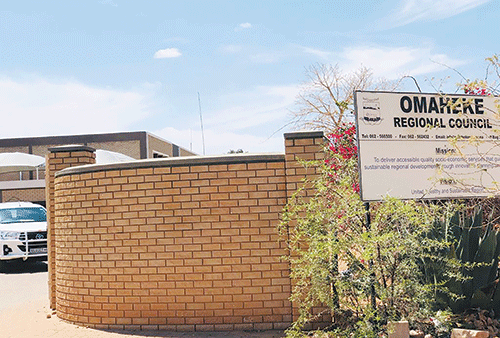SOCHI – There is no doubt that cattle breeding is the major agricultural industry in Namibia’s Omaheke region, where both commercial and communal farmers participate vigorously in animal husbandry.
“Cattle Country” is the inscription at the base of the statue of a bull at the entrance to Gobabis, the regional capital of Omaheke.
However, this industry alone has not yielded the desired results as the region faces serious challenges of malnutrition, rising poverty levels, plummeting cattle numbers and widespread unemployment.
But the political leadership of the region sees hope on the horizon.
“We have noticed over the years that as much as we are known as the cattle country and we have been depending on farming, that hasn’t been a solution. Poverty levels in Omaheke are standing at 39%, and that is worrisome. So, we need to embark on looking at new economic streams like mining,” Omaheke governor Pijoo Nganate told New Era last week on the sidelines of an international event in Sochi, Russia.
He noted that he is alive to the fact that about 52% of Omaheke’s inhabitants have no income. The proposed uranium extraction method has been bothering residents, though.
“I believe as much as it’s a new thing, it is bringing fear in most people, and the narrative that was given was not positive by those who went ahead to try to convince the community. We are also aware of some dynamics within the community themselves. There is fear from the farmers because their livelihood relies on
agriculture, but we need to allay the fears, and be more transparent on the mining method,” said the governor.
He added that a planned symposium aims to bring independent experts to explain the proposed extraction method to the residents.
Nganate, along with chairperson of the parliamentary standing committee on economics and natural resources Tjekero Tweya as well as other government officials attended the Atomexpo-2024, an international forum held under the theme ‘Clean Energy: Creating the Future Together’.
The event was aimed at discussing the role
of nuclear power engineering as part of
national strategies to combat climate change.
It was organised by pioneers of nuclear energy, Russia’s State Atomic Energy Corporation (Rosatom). Rosatom is the mother company of state-owned Russian company Uranium One, which has created Namibian subsidiary Headspring Investment, which is currently leading the charge for a uranium project in the Omaheke region. The project is, however, hanging in the balance after environmentalists and local farmers remain resolute in opposition. Their rejection is premised on an argument that the proposed uranium extraction methods’ risks outweigh the benefits, the dominant fear being the contamination of the scarce underground water resources.
On his part, Tweya said the committee is conducting independent consultations before pronouncing itself on the contentious matter.
Extraction controversy
The contentious extraction method is in-situ leaching (ISL), also known as in-situ recovery (ISR). It involves leaving the ore where it is in the ground, and recovering the minerals by dissolving them and pumping the pregnant solution to the surface where the minerals can be recovered.
This method is preferred, as it results in little surface disturbance and no tailings or waste rock generated. However, the ore body needs to be permeable to the liquids used, and not to contaminate groundwater close to the ore body.During a familiarisation visit in Russia last week by journalists from Namibia to the Dalur mine owned by Rosatom, Dinis Ezhurov, director general of the mine, said ISL is economically profitable and environmentally-friendly, compared to other mining methods.
At the time, he added that the ISL continues to see more and more use in global uranium production, noting that no health problems with staff have been reported after more than 50 years of ISL mining deployment.
Dalur is one of Rostatom’s modern developing assets, and the first uranium producer in Russia using the ISL production technology.
According to locally-registered Headspring Investments, this will be the same method introduced in the sleepy village of Leonardville, pending governmental, ministerial and regulatory approval. “The approach remains the most popular due to its benefits. In 2021, the ILS approach accounted for 51% of global overall production. According to projections, the proposed mining technology will extract 60% of the uranium,” said Ezhurov.


